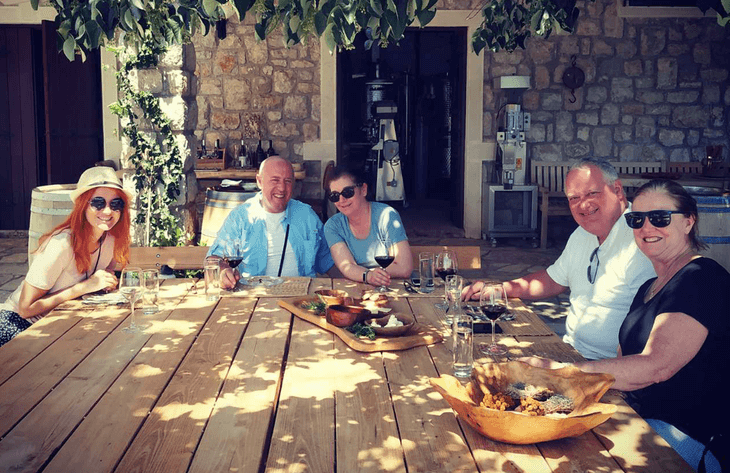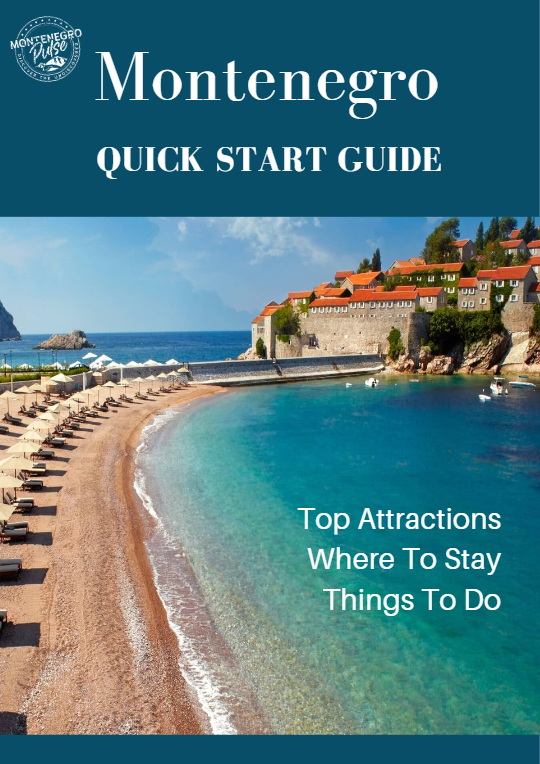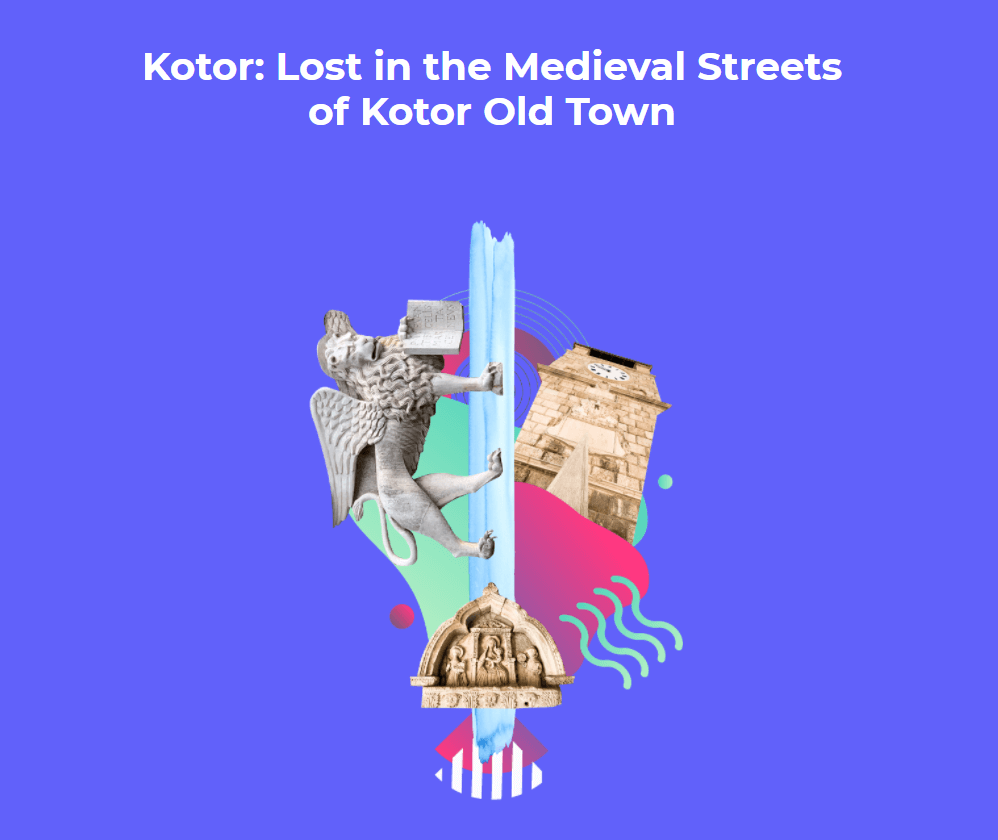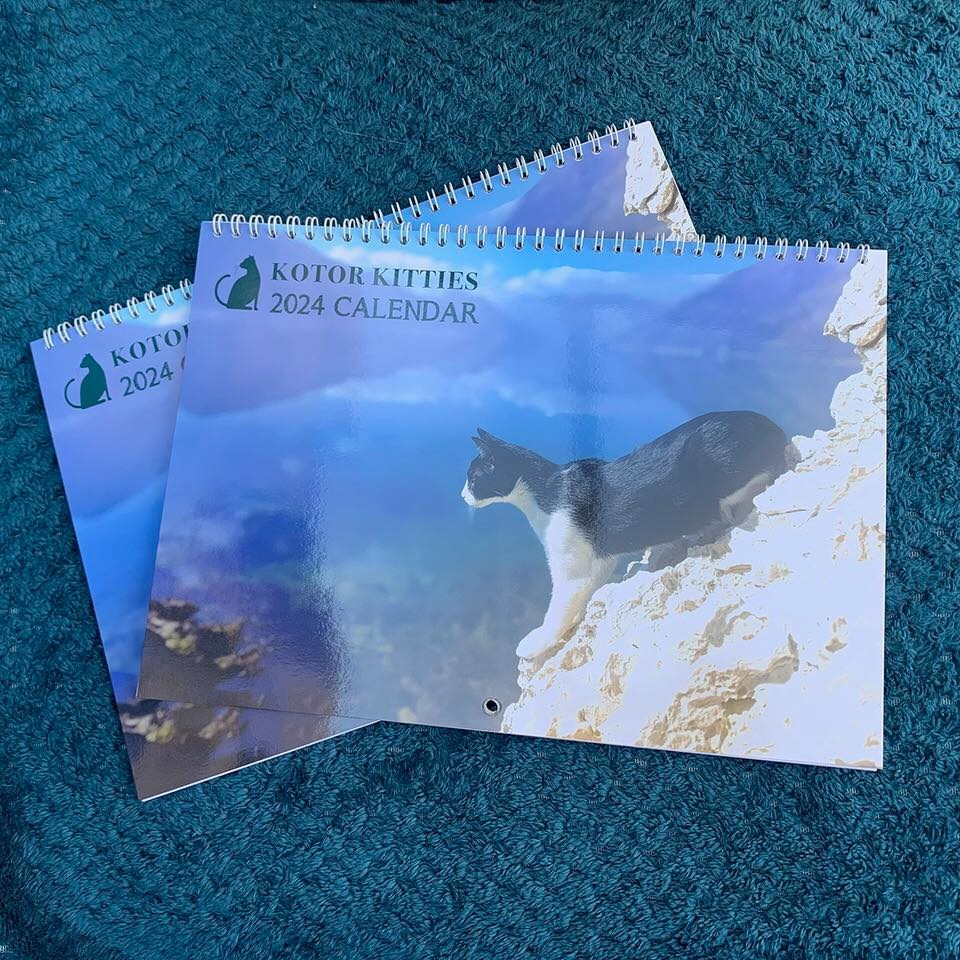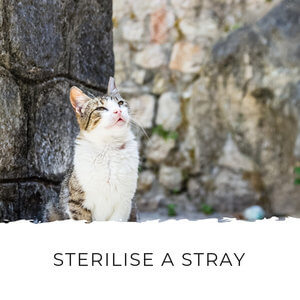Montenegro Pulse contains affiliate links and is a member of the Amazon Services LLC Associates Program. If you make a purchase using one of these links, I may receive compensation at no extra cost to you. See my disclaimer for more information.
St Tryphon Cathedral, Kotor: 9 Must-Sees In Kotor's Top Attraction
BY SARAH
Discover the top 9 must-see sights at St Tryphon Cathedral, Kotor, including the fascinating story of how this icon of the town almost never came to be!
Nestled within the labyrinthine streets of Kotor Old Town, St Tryphon Cathedral (Sveti Tripun) is one of the town’s top attractions. This Kotor cathedral is an icon in the old town (stari grad) and it’s a must-see when you visit Kotor.
Consecrated in 1166 on the remains of a former temple dedicated to Kotor’s patron saint, Saint Tryphon, St. Tryphon Cathedral takes you back to an era when Kotor was a bustling seaport of the medieval world.
The nominal entrance fee includes entrance to the Sacral Art Museum which holds some of Kotor’s most treasured artworks and religious artefacts. It also keeps the cathedral from getting too busy, which helps it retain a the atmosphere of place of worship.
You'll get the most out of your visit to this cathedral if you know what to look for while you're there and a little about the history of the cathedral. You can do this by booking a walking tour that includes a guided tour of the cathedral or by referring to this article.
In this guide, you’ll discover the top must-sees in St Tryphon Cathedral, including the 14th-century ciborium, Byzantine frescoes, and where to see St Tryphon's relics.
You’ll also find out the fascinating story behind Kotor’s patron saint and how this Kotor icon almost never came to be!
The 8 Must-Sees of St. Tryphon Cathedral, Kotor
1. The Grand Facade
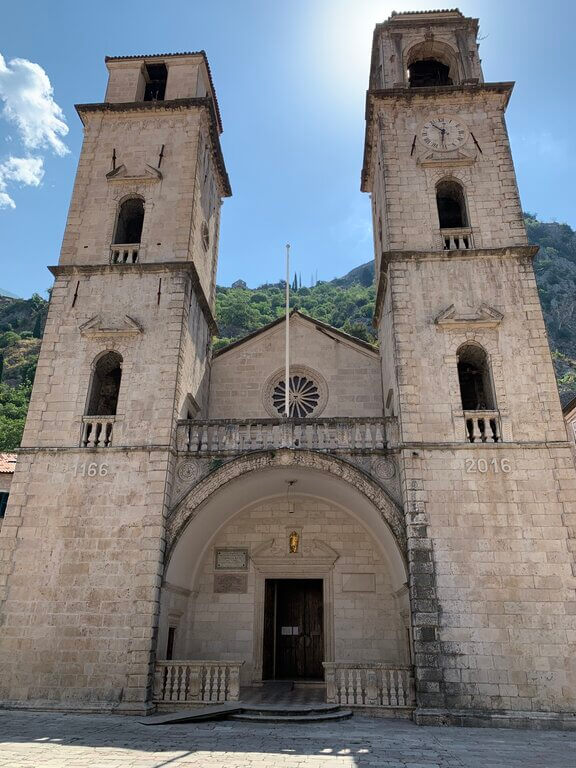 St Tryphon Cathedral Kotor Montenegro
St Tryphon Cathedral Kotor MontenegroUpon arrival, you'll be greeted by the cathedral's impressive facade and the detailed portal at the entrance.
This Roman Catholic cathedral is a three-aisled basilica with four-floor belfries, connected by a terrace. The building’s original architecture showed the southern Italian style that was influential throughout the Nemanjić Dynasty at the time.
But the cathedral has changed significantly over the centuries. After an earthquake in 1667 brought down the cathedral’s Romanesque facade, it was rebuilt in the mature Baroque style you see today.
However, some of the older architecture was saved. In the vaulted entrance, you’ll see Gothic-Renaissance ornamental motifs from the 16th century.
Around the cathedral, some Romanesque carvings remain and are some of the best-preserved examples of Romanesque sculpture in the Adriatic.
2. The Bell Towers
The 1667 earthquake also brought the cathedral’s Romanesque bell towers. Like the facade, they were rebuilt, but in the mature Baroque style.
Due to economic hardship at the time, the left bell tower was never finished and it’s still two meters shorter than the right one.
3. Romanesque-Gothic Ciborium
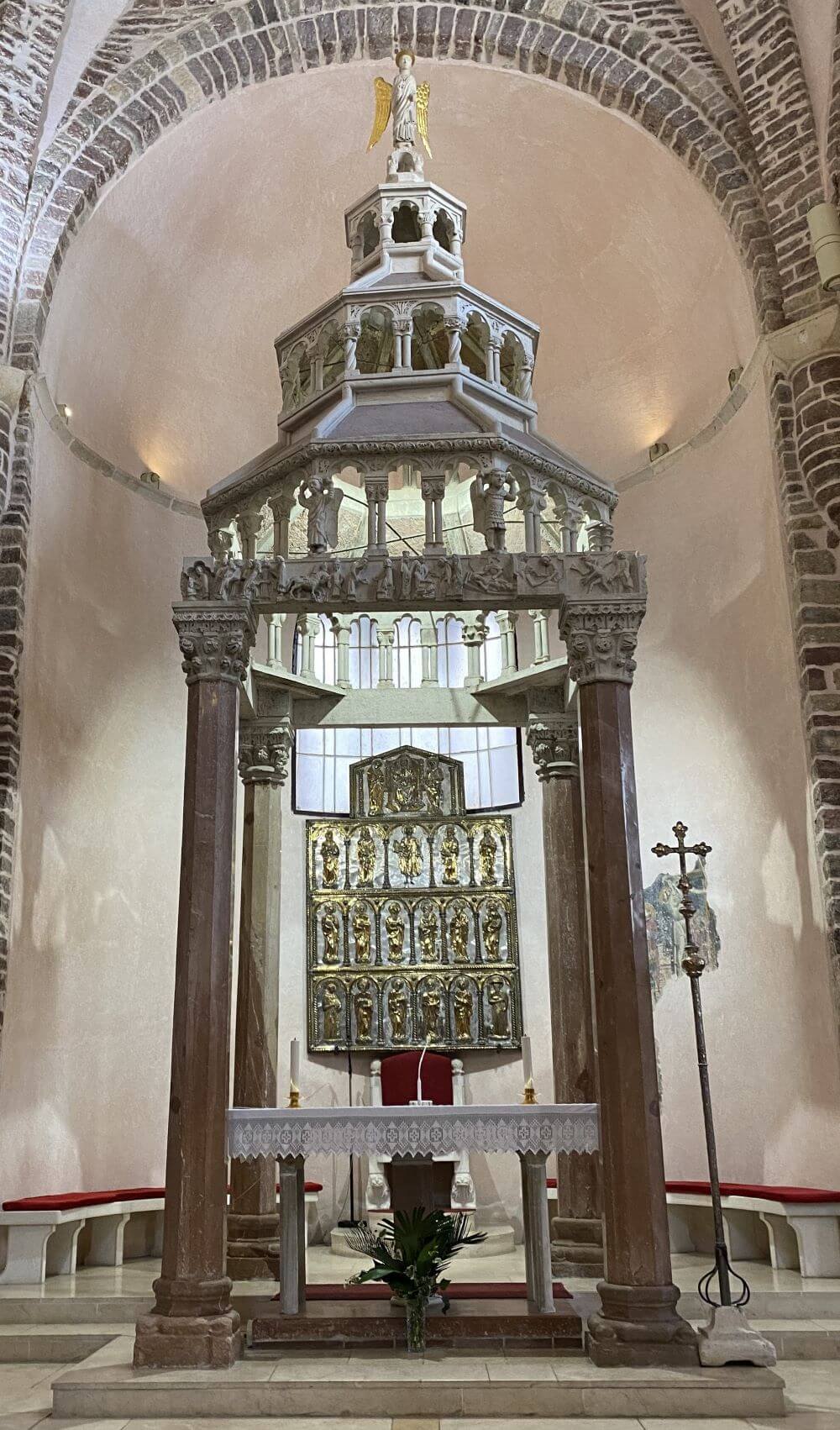
The unique stone ciborium over the main altar was added to the cathedral in 1362 and is a masterpiece of 14th-century stonecutting art from the then-famous Kotor sculpture school.
The masterpiece was made in the Romanesque-Gothic style from red stone from Đurići, in the Bay of Kotor, and sits above the main altar. The frieze of the ciborium depicts scenes from Saint Tryphon’s life in bas-relief.
Behind the altar, you’ll see a bas-relief which is the work of Kotor’s 15th century goldsmiths.
Although it’s known as a ‘Venetian town’, Kotor was most powerful during the reign of the Njemanjić Dynasty (1185 - 1371). Raw materials came from the mines in Serbia and were exported from Kotor, so Kotor’s gold- and ironsmiths had easy access to materials.
They founded a renowned school in Kotor and Kotor’s medieval goldsmiths and artists who were known throughout the Mediterranean.
4. Frescoes
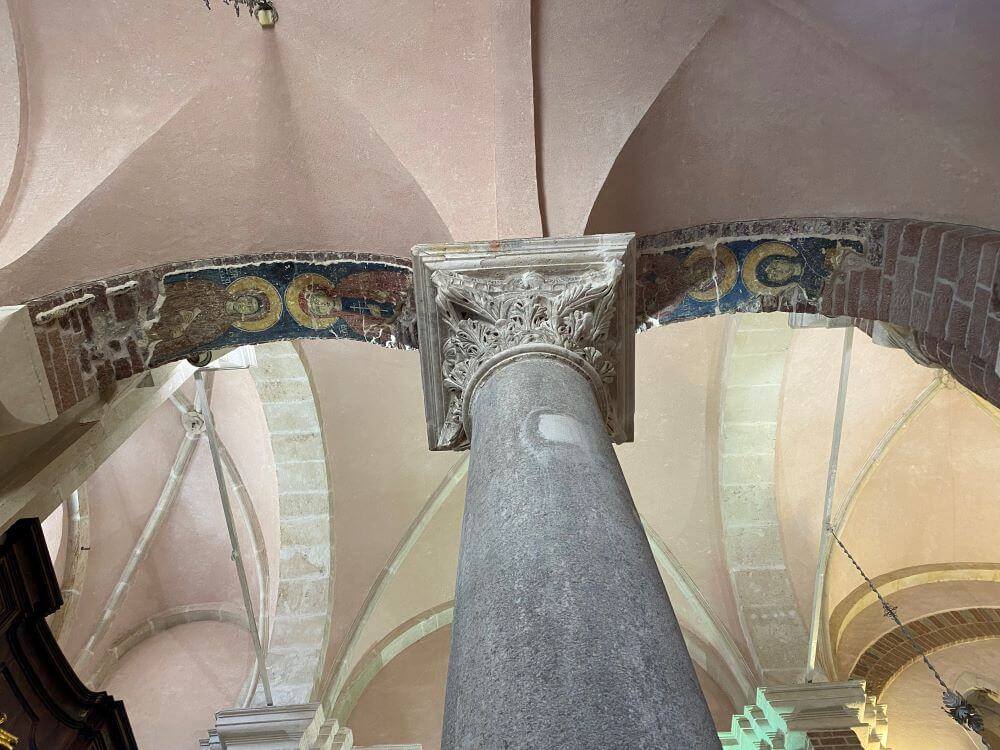
In the 14th century, the whole interior of St Tryphon Cathedral was decorated with frescoes in Gothic-Byzantine style by a group of Greek painters.
Unfortunately, these were hammered off in subsequent renovations, but other Byzantine frescoes in the cathedral have been saved. You can see them in the crowns of the arches between the central and side naves.
5. Sarcophagus of Andrea Saracenis
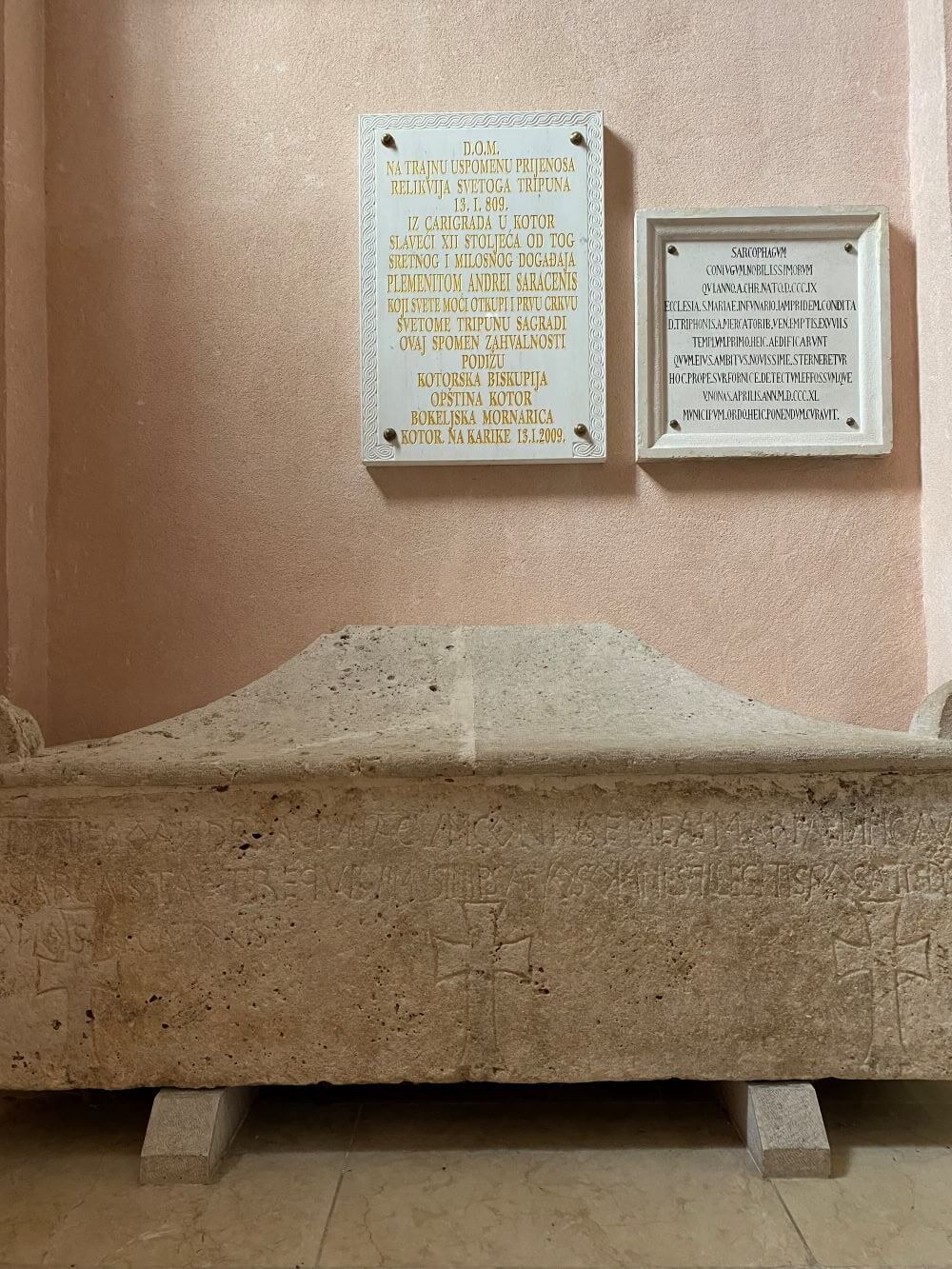
Andrea Saracenis and his wife Maria are credited for buying Saint Tryphon’s relics and building the first church in this spot.
This first church was consecrated in 809 and lies below St Tryphon Cathedral. It was only discovered in 1979 when an earthquake damaged the cathedral and the remains of the older church were uncovered during the restoration.
Andrea Saracenis’ sarcophagus was discovered near the cathedral and today sits near the back of the cathedral.
6. The Chapel of Saint Tryphon and Saint Tryphon’s Relics
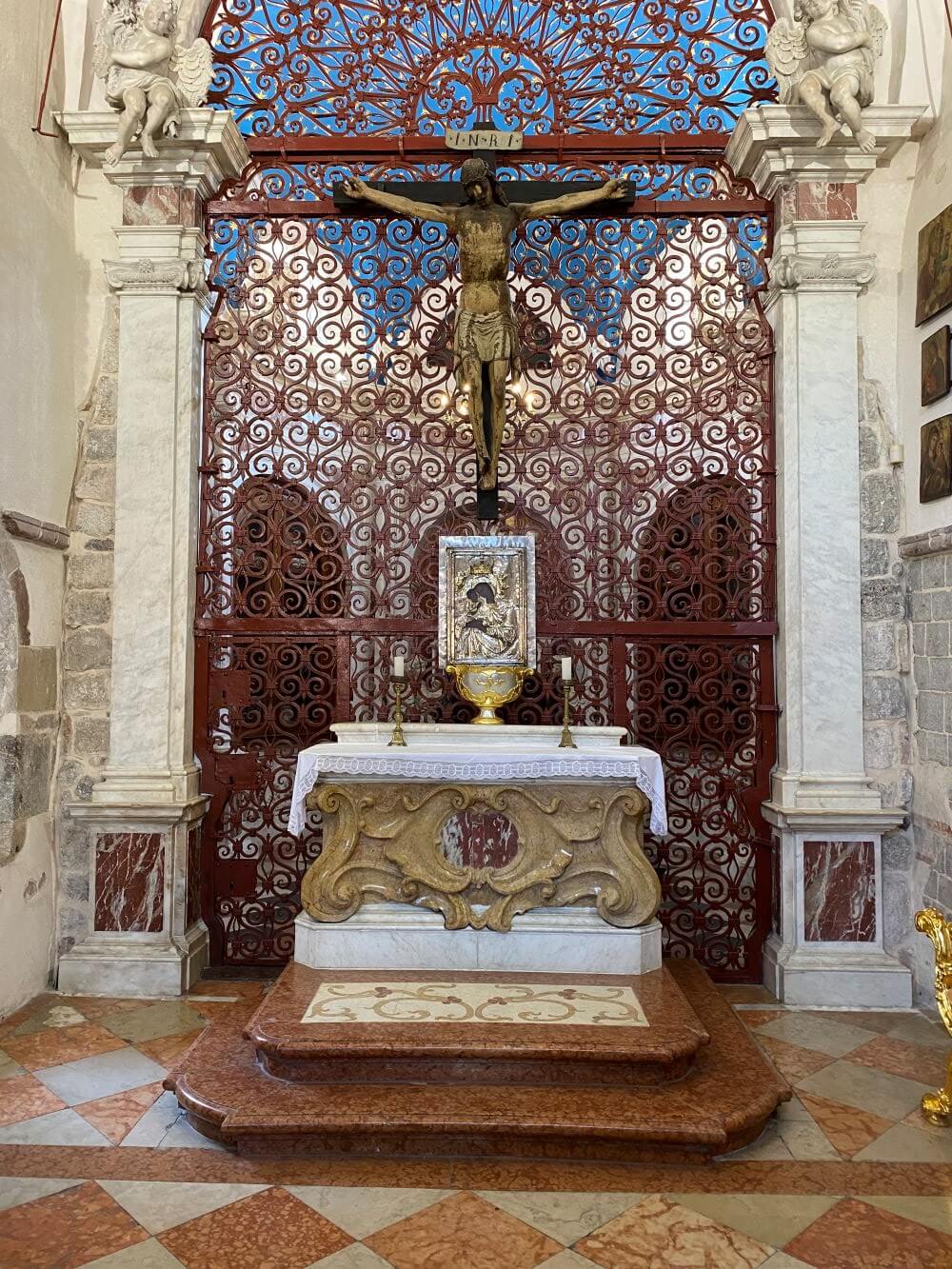
At the beginning of the 18th century, Kotor residents ivan Bolizz and his wife Vinka financed the decoration of the cathedral’s reliquary by celebrated Venetian sculptor Francesco Cabianca (1666 - 1737).
Cabianca created an elegant space with niches for the relics, which are housed in silver boxes engraved with scenes of the torture and death of Saint Tryphon. On either side, marble angels hold the niches and a marble statue of Saint Tryphon sits on top.
The reliquary is separated from the chapel by a Baroque wrought-iron gate that was made in Venice in 1652 and a marble altar that was also sculpted by Cabianca.
Cabianca's artwork for this reliquary is considered one of the finest examples of Baroque sculpture on the Adriatic coast.
7. The Treasury
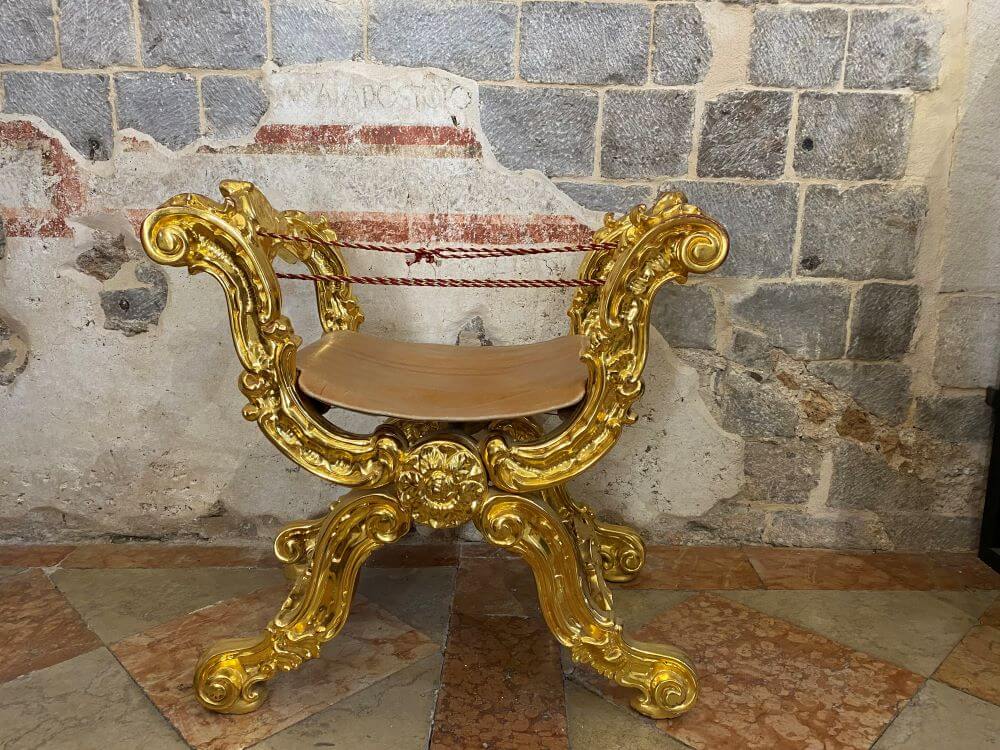
Adjoining the cathedral is a treasury that houses some of Kotor’s most treasured artworks.
I think the treasury is worth visiting to see some of the ancient artefacts from Kotor. I particularly like the Gothic carvings, which give you an idea of how beautiful Kotor's buildings would have been in the 15th century.
Inside, you’ll be able to view:
- The reliquary
- The marble chest used to transport Saint Tryphon’s relics which dates back to the pre-9th century
- A 15th-century crucifix
- Paintings by celebrated Gothic painter Lovro Marinov Dobričević from the 15th century
- Paintings by Baroque painter Tripo Kokolja from the 17th and 18th century
- Roman artefacts from the 4th and 5th centuries
- Vestment robes
- Fragments of beautiful, ornate Gothic windows and Gothic trifora (triple window frames)
- Wooden crucifix which was a gift from Queen Jelena Kurtnejska, wife of Uroš I Njemanić, to Kotor’s St Francis monastery in 1288
8. The Cathedral Square
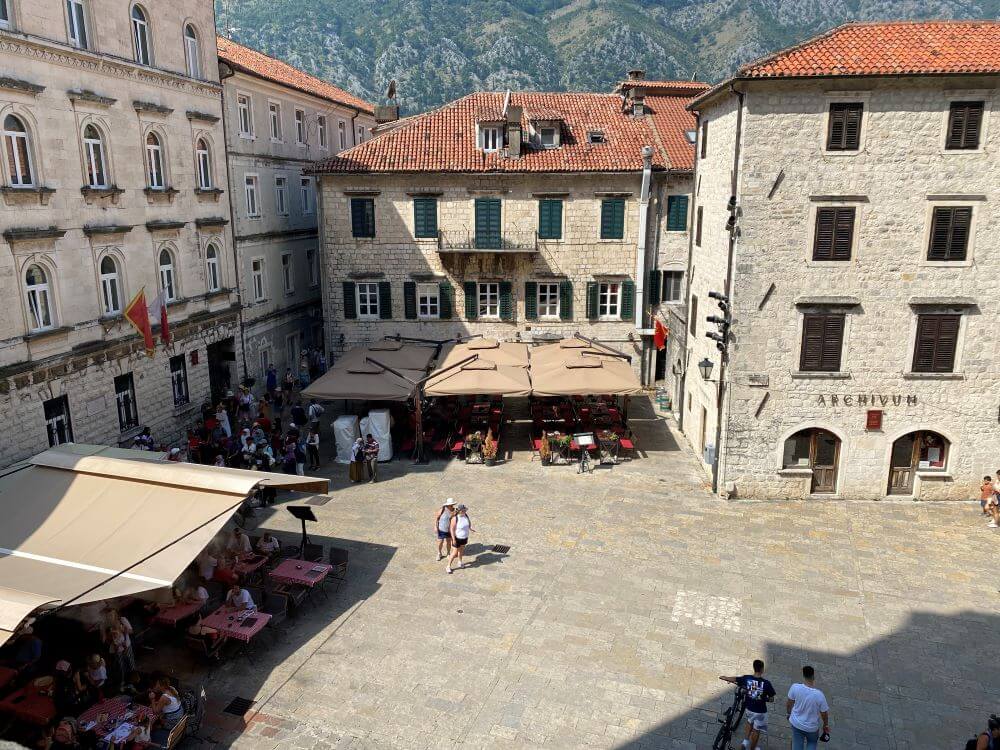
From the treasury, you can step out onto the terrace between the bell towers. From here you’ll have a fantastic view over St Tryphon Square.
This space is not just a scenic spot but a living part of Kotor, hosting events and gatherings that continue to be part of the city's vibrant culture.
St Tryphon Cathedral Kotor Tickets
St Tryphon Cathedral is the only church in Kotor you have to pay entrance for, but it's an entrance fee to the treasury not the church itself.
The entrance is €4 per person, payable in cash at the entrance to the cathedral.
If you need cash, there are ATMs in Weapons Square as you enter the old town through the Sea Gate.
Pro Tips for Visiting St Tryphon Cathedral, Kotor
- Getting to St Tryphon Cathedral - take a free map from the kiosk in front of the Sea Gate, you’ll easily find the cathedral on St Tryphon Square (marked #21 on the map).
- Allocate at least an hour to fully appreciate the cathedral's offerings. While the site is mostly accessible, some areas may pose a challenge for those with mobility issues.
- St Tryphon Cathedral dress code - remember to dress respectfully, as this is a place of worship.
- To capture the cathedral in soft morning light or to avoid the crowds, plan to visit early in the day.
- Mass is held from 9 am to 11 am on Sundays.
Best Ways to See St. Tryphon Cathedral in Kotor
Private Kotor Walking Tour - this private 2 hour walking tour of Kotor includes a guided tour of all of Kotor's top sights, including St Tryphon Cathedral and the Maritime Museum.
Kotor Small Group Walking Tour - this small group walking tour is an affordable way to see Kotor's top sights and get an overview of the town. It doesn't include a visit inside St Tryphon Cathedral, but you can come back to see it after the tour.
Kotor Self-Guided Walking Tour - this self-guided walking tour of Kotor gives you all the information you need to explore Kotor's top sights and hidden gems at your own pace.
Kotor Secret City Trail – The Kotor walking tour for fun people! If you like games, puzzles, riddles, quizzes and discovering a place beyond the usual tourist traps, you’ll love the Kotor Secret City Trail. On the trail you solve clues that lead you to various attractions and hidden spots around Kotor.
Each clue unlocks a fascinating story about the town. You'll discover secrets only Kotor locals know about and you'll even be able to try a coffee experience that can't be found anywhere else in the world!
If this sounds like your idea of fun, use the code 'montenegropulse' to get 10% off your game!
St Tryphon Cathedral Kotor History
Saint Tryphon is Kotor’s patron saint and is revered by both Catholic and Orthodox faiths.
But if it weren’t for a twist of fate, St Tryphon would have been Dubrovnik’s patron saint instead...
Saint Tryphon was a healer who was tortured and beheaded in Turkey in 250 A.D. during the Decian persecution. Centuries later, there was a market for saints’ remains and his relics were on the way from Constantinople (today’s Istanbul) to Dubrovnik, where they had a buyer.
But a storm meant the ship taking them couldn’t sail and this was taken as a sign from God that his relics were supposed to stay in Kotor.
Kotor residents Andrea and Maria Saracenis bought the relics and Saint Tryphon became Kotor’s patron saint instead of Dubrovnik’s.
With the relics in Kotor, a new church had to be built to house them. So, a domed church in the shape of Greek Cross, was built and consecrated on 13th January 809.
In 1124 Kotor’s town council approved funds to build a new cathedral in place of the church, and the three altars of St Tryphon Cathedral were consecrated on 19th June 1166.
Accommodation Near St Tryphon Cathedral, Kotor, Montenegro
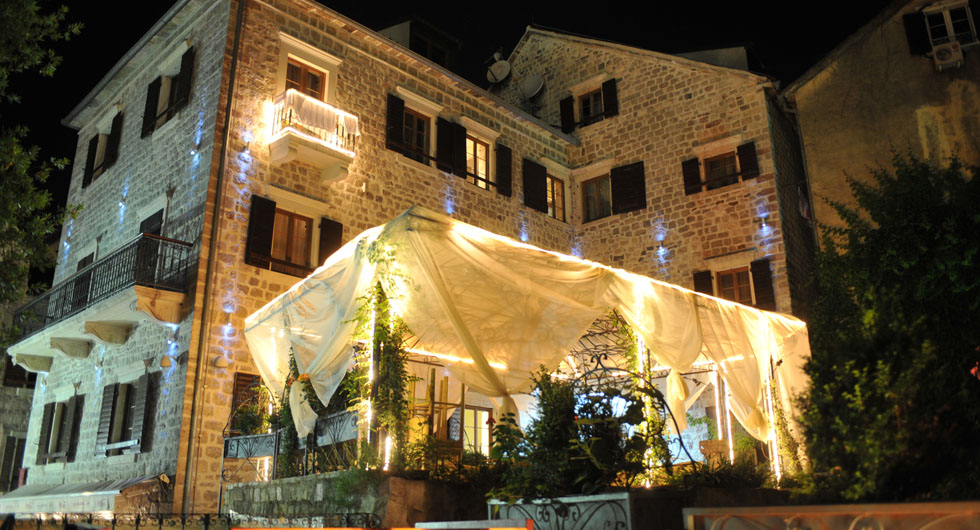 Hotel Villa Duomo near St Tryphon Cathedral, Kotor, Montenegro
Hotel Villa Duomo near St Tryphon Cathedral, Kotor, MontenegroStaying in Kotor old town is a wonderful experience. The beautiful surroundings and ambiance of the old town combined with the convenience of having dozens of restaurants, bars and tour options within a few minutes’ walk make this a wonderful place to stay.
Here are some of the best places to stay in Kotor old town:
Hotel Villa Duomo – a beautiful 4 star hotel that has studio, one- and two-bedroom apartments on St Tryphon Square.
Palazzo Drusko – a warm and friendly boutique hotel that’s filled with authentic artefacts from Kotor. The shared kitchen means you can cook and it’s tucked away in a quiet corner of the town.
Pearl Apartments – luxurious serviced apartments that are the most spacious in Kotor.
Old Town Hostel – the most fun hostel in Kotor is a great place to meet people, join tours and it even has the only pool in Kotor!
Frequently Asked Questions
What time is the Mass at St Tryphon Cathedral?
What time is the Mass at St Tryphon Cathedral?
Mass at St. Tryphon Cathedral is typically held from 9 am to 11 am on Sundays. However, I recommend checking the latest schedule upon arrival as times may vary, especially during religious holidays or special events.
What is the oldest church in Kotor Montenegro?
What is the oldest church in Kotor Montenegro?
The oldest church in Kotor, Montenegro, is the Church of St. Luke, dating back to 1195. This church stands out for its rich history and dual Catholic and Orthodox altars.
Who is the patron saint of Kotor?
Who is the patron saint of Kotor?
The patron saint of Kotor is Saint Tryphon, a Christian martyr from the 3rd century. St. Tryphon's feast day is celebrated on February 3rd, and it is a significant event in Kotor marked by religious ceremonies and local festivities.
Final thoughts
St. Tryphon Cathedral is one of Kotor’s most beloved landmarks and it’s well worth the entrance fee to pay a visit to St Tryphon Cathedral while you’re in Kotor Old Town.
Inside, you’ll be able to view some of this region’s most ancient and treasured artefacts.
Ready to explore further? Read more about all the other things you can see and do in incredible Kotor with my epic list of things to do in Kotor.

If you are visiting Kotor, my guide to Kotor old town is an indispensable book to take with you. This guide is like having a local best friend to show you the most interesting sights and hidden gems of Kotor.
- Home
- Things to Do in Montenegro
- St Tryphon Cathedral

